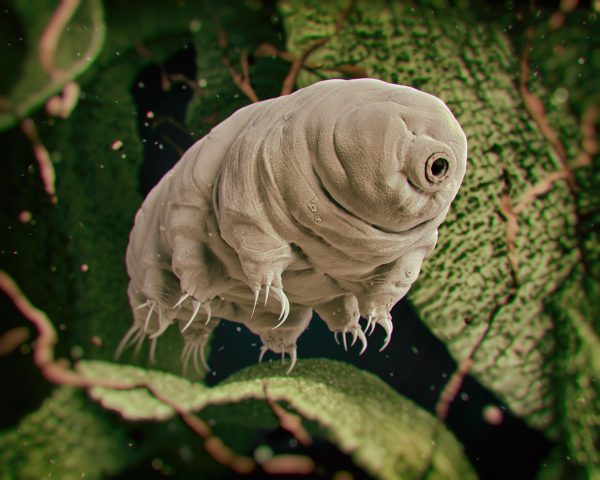Regular visitors to this site will know how much I adore waterbears. Today Live Science covers what we know about them:
Tardigrades, often called water bears or moss piglets, are near-microscopic aquatic animals with plump, segmented bodies and flattened heads. They have eight legs, each tipped with four to eight claws or digits, and somewhat resemble the hookah-smoking caterpillar from “Alice in Wonderland.” Though tardigrades are disarmingly cute, they are also nearly indestructible and can even survive in outer space.
Tardigrades were discovered in 1773 by the German zoologist Johann August Ephraim Goeze, who dubbed them “little water bear.” Three years later, Italian biologist Lazzaro Spallanzani named the group “Tardigrada,” or “slow stepper,” for their toddling gait, according to the Science Education Resource Center at Carleton College (SERC). There are currently about 1,300 known tardigrade species within the Tardigrada phylum (a classification category) according to the Integrated Taxonomic Information System (ITIS), a resource for species names and classifications created by a partnership of U.S. federal agencies.
A tardigrade’s body typically consists of only 1,000 cells, according to an article published in the journal Arthropod Structure and Development in 2019. In comparison, the human body is made up of many trillions of cells.



